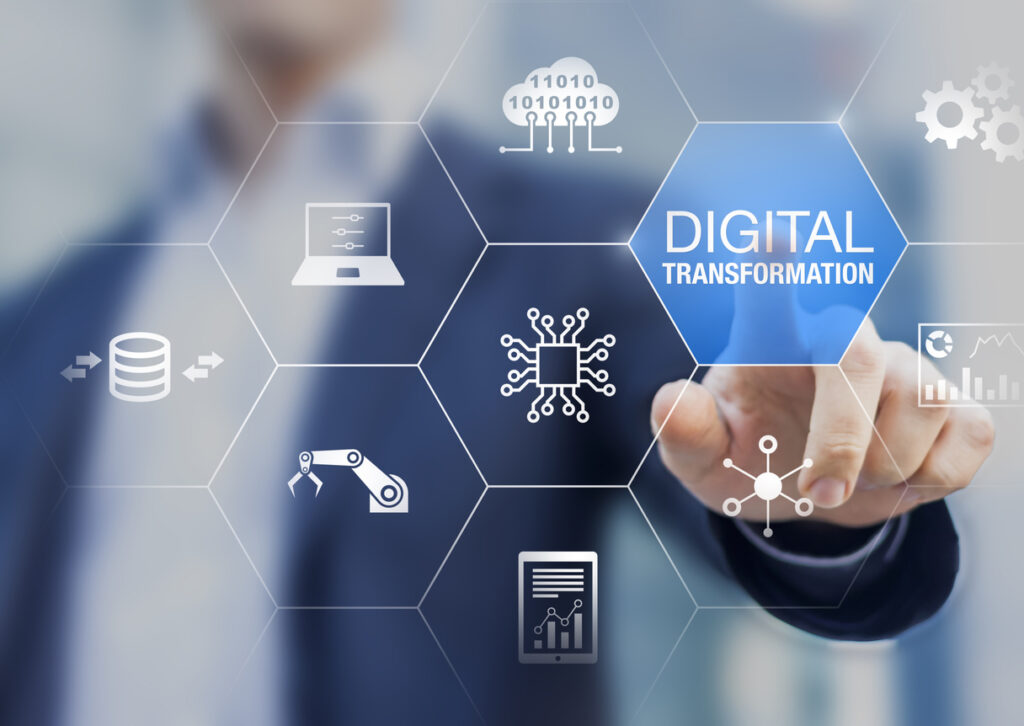The ROI of Knowledge Engagement for Customer Support Teams

What Knowledge Sharing Looks Like
Before we dive into the importance of knowledge engagement for customer support, let’s pause to define knowledge engagement in the context of the workplace.
Workplace knowledge engagement requires:
1. Documenting both explicit knowledge, such as process documents, and implicit knowledge, such as the best practices employees have learned from experience.
2. Centralizing that knowledge so that employees can easily find it
3. Encouraging and incentivizing employees to share what they know and engage with their colleagues’ knowledge.
The most effective way to document, centralize, and share knowledge is to choose a searchable knowledge engagement platform to be the hub for all company knowledge. An effective knowledge engagement platform will not only act as a single source of truth, but it will also make it easy for employees to search for specific information so that they always have the answers they need at their fingertips.
In a department such as customer support, where staff must have the capability of accessing the latest collective company knowledge at the drop of a hat, a high level of connectivity is crucial to your team’s success. Effective knowledge engagement solutions bring together content and people across locations, making it easier to answer questions, solve problems, locate information, and ultimately improve business outcomes. Knowledge engagement software can be deployed as a standalone solution, or integrated to work with other enterprise software applications such as content management, customer relationship management, or chat systems.
Today’s fastest growing companies are using knowledge engagement to accelerate onboarding and training, enhance customer satisfaction, and speed sales cycles.
Why Customer Support Teams Need Knowledge Engagement Technology
Between emails, messaging apps, websites, blogs, and social networks, today’s employees have instant access to an overwhelming amount of information. While these virtual touch points provide ample opportunities for individual contribution, they can also create organizational challenges that lead to reduced communication, collaboration, productivity, and innovation — ultimately impacting business performance, competitive advantage, customer satisfaction, and customer retention.
The glut of information channels available to support agents is causing another significant challenge: as information becomes spread out, it becomes harder and harder to find the right knowledge in a timely manner. And your customers don’t want to wait.
Experts agree that just as social media has transformed global communication, it is now driving meaningful changes in customer service functionality. If customers can immediately access news and social updates, chat with friends, family, and coworkers, and receive near instant support in their personal lives within social media networks, they will expect nothing less from your team of professionals. In fact, 73 percent of consumers say the single most important thing a company can do to provide good customer service is to value their time.
Knowledge engagement technology harnesses the collective intelligence of your company to put the right answers at your fingertips at the right time. It does this by:
1. Facilitating information sharing across different locations at any time
2. Laying down clear digital pathways that improve team-based outcomes
3. Making the right information and people accessible wherever and whenever work gets done in the organization
4. Acting as a single source of truth so that all employees are accessing the same up-to-date information
As a result, teams work more efficiently, customers are happier, and employees are more engaged.
These are all great achievements for any organization, but how do we measure the tangible ROI of effective knowledge engagement? In the next section, we’ll look at how you can measure hard and soft ROI and explore some examples that are specific to customer support.
Measuring ROI
When your organization invests in a knowledge engagement strategy (and the software to support it), anecdotal evidence isn’t enough to prove that solution’s value. To justify the ongoing use of the knowledge engagement strategy and software, you need to show that it’s providing a clear return on investment.
But using the textbook definition of ROI (the exact dollar profit netted for every dollar spent) makes it difficult to pin down the precise benefits of an ongoing knowledge engagement strategy. This approach overlooks many of the less tangible (but still important) benefits of knowledge engagement, such as increasing support agent’s confidence in information and improving the customer experience. Instead, companies should take a more holistic look, considering both the hard and soft ROI benefits of a knowledge engagement solution.
What Is Hard ROI?
Hard ROI benefits are quantifiable and can be assigned a specific financial value. For example, let’s say you calculate the average hourly pay for your customer support agents and then determine the number of hours per month that your agents save when they use a knowledge engagement platform to find information. From there, you could come up with an estimate for the amount of money your customer support department is saving per month with your knowledge engagement platform. This is a type of hard ROI.
What Is Soft ROI?
Soft ROI is harder to quantify than hard ROI and relies on a business case, often involving a number of steps for the benefit to be realized. For example, you might discover that when your customer support department starts using a knowledge engagement platform, your agents start collaborating more openly and sharing best practices with one another more frequently. This, in turn, helps agents deliver a better experience to customers. This is clearly a benefit, but it’s hard to assign an exact monetary value to it.
While hard ROI may be the ultimate goal, adding soft ROI benefits to a business case can be key to proving the true profitability of a strategic business investment.
Hard ROI:
Quantifiable benefits that can be assigned a specific financial value
Soft ROI:
Qualitative benefits that contribute to long-term success
Examples of Hard and Soft ROI of Knowledge Engagement Software for Customer Support
Now that we have a high-level view of the hard and soft ROI of knowledge engagement, let’s take a closer look at how you can make a strong business case for implementing a knowledge sharing platform.
Onboarding
Onboarding new employees is one of the most critical steps in the hiring process and can have a significant impact on long-term success. As a cross-functional process, many business units are involved, including the hiring manager, IT, HR, training, facilities, and others. Without an effective strategy to manage knowledge, that can often lead to new hires receiving conflicting, unclear, or repetitive information. It’s no wonder, then, that only 12 percent of employees strongly agree that their organization does a great job onboarding new employees.
Consider your past experiences training new customer support representatives. Were they overwhelmed, even frantic, the first time they needed to recall product information at the drop of a hat to assist a customer? Knowledge engagement systems give new hires immediate access to the latest collective company knowledge—and allow them to revisit that knowledge whenever they need to. This helps new employees become capable and confident, and it enables customer support professionals to provide high-quality support that is thorough and timely enough to keep the customer satisfied.
By making it easy for new hires to access training materials and customer support resources on demand, a knowledge engagement platform can speed up your average onboarding time. Companies using Bloomfire for customer support have seen a decrease of 15 percent or more in the time it takes to onboard new support agents
You can also connect employee retention metrics to a successful onboarding program. According to research by Glassdoor, companies with a strong onboarding process improve their new hire retention by 82% and boost productivity by more than 70%.
Because an effective onboarding program helps boost new hire retention, it also reduces the cost of employee turnover. And considering that it costs an estimated 33 percent of an employee’s salary to replace them, the savings your company gets from retaining more employees can add up.
Ongoing Training
Customer support training cannot simply end once the initial onboarding period is over. Training should be considered a process, not an event. By providing ongoing support to customer-facing employees through a knowledge sharing platform, organizations can maximize their long-term impact.
Using knowledge engagement tools in ongoing training can pay immediate dividends. Employees can join an internal knowledge community where they can connect, ask questions, and get tips and hints from those already in the company.
A knowledge engagement platform allows employees to learn on the fly and find the information they need, when and how they need it. This type of platform increases employee performance by leveraging the wisdom of crowds and improves overall engagement by enabling employees to collaborate directly from any device or tool where they are already working. It also reduces the time it takes employees to find the information they need to learn. Bloomfire users, for example, save an average of 30 minutes per day looking for information, which translates to time savings of 130 hours, or more than three full work weeks per year.
When making the case for ongoing customer support training, it’s important to demonstrate how this is an investment that pays off, both in time savings and productivity. Companies that invest $1500 on training per employee per year average 24% higher profit margins than those who invest less. Additionally, companies that make this investment average 218% higher income per employee than those who don’t.
Time to Resolution
Average time to resolution—or the average time it takes a customer support agent to resolve a case after it’s been opened—is a key metric in customer service, and another area that can be improved with knowledge engagement technology. There’s a direct correlation between how long it takes your agents to resolve a customer’s issue and how satisfied that customer feels, and a high average time to resolution increases your risk of losing frustrated customers to your competition.
One of the main culprits behind a high average time to resolution is a lack of an effective knowledge engagement system. The more information you have spread out across different platforms or hidden in cryptically named folders, the longer it will take your agents to find answers for your customers. When all customer support documents and FAQs are stored in one searchable platform, your agents can find what they’re looking for quickly and reduce the time it takes to resolve your customers’ issues.
Businesses have seen tangible results when implementing a knowledge engagement platform to reduce their customer support team’s time to resolution. Professional services company AGIA Affinity saw a 50 percent reduction in calls placed on hold and a 15 percent improvement in talk time just a couple months after launching Bloomfire in their contact center. And outdoor goods retailer Orvis saw their contact center’s first call resolution rate double after implementing Bloomfire.
Customer Self-Service
Just a few years ago, it was considered acceptable to respond to a customer support email within 48 hours. Today that thought is laughable. In fact, a McKinsey study found that 75% of customers expect service within 5 minutes of contacting a business online.
With customer support expectations so high, equipping support agents with quick access to up-to-date documentation and expertise is no longer optional. Many companies are extending their customer support options to include branded communities and self-service portals that dramatically improve customer engagement, decrease time to resolution, and improve customer satisfaction. And according to Forrester, customers prefer knowledge bases (i.e. online platforms where users can search for the information they need) over all other self-service channels.
The most effective knowledge bases for customer support feature robust Q&A functionality that allows users, whether customers or support staff, to ask and answer questions while leaving a historical trail that is keyword tagged, indexed, searchable, and easily updated so the next person with the same question can quickly find the answer.
One important metric to track when looking at the value of a knowledge base is incoming call volume. When more customers are able to find the information they need through a self-service knowledge base, your support agents should receive fewer calls about routine issues, giving them more time to help customers with complex problems
Employee Morale
It should go without saying, but your customer support employees want to help your customers succeed. When they’re unable to find the information they need to satisfactorily resolve a customer’s issue, it causes stress. And that stress can have a significant impact on overall employee morale and the bottom line: US businesses lose an estimated $300 billion annually due to absenteeism, turnover, and lower productivity.
On the other hand, when employees are able to find the information to help your customers—and when they feel like they’re contributing to the company’s overall success—you’ll see improvements in employee morale, engagement, and productivity. Gallup actually found that companies with satisfied, engaged employees enjoy 21 percent greater profitability than those with less engaged employees.
Customer Satisfaction
When your support agents are able to quickly and confidently find the information they need to help your customers, your customers will be more satisfied—and more likely to do business with you again. 68 percent of customers report that a service rep was key to a recent positive customer experience, and 62 percent say that the rep’s knowledge and ability to connect them to the right resources was a driver of that positive experience.
With customer experience quickly becoming the determining factor for purchases, investing in a knowledge engagement platform to boost customer satisfaction can pay off in a big way. 93% of customers are likely to make repeat purchases from businesses that offer excellent customer service. 17% of customers even say that they’re willing to spend more money on a product from a company that delivers an exceptional customer experience.
Aligning the Entire Customer Experience
We’ve looked at some of the specific ways that knowledge engagement technology can deliver a significant ROI for customer support teams, but effective knowledge engagement is far from limited to customer support. Before your department gains a customer to assist, the sales and marketing departments must secure that customer. To do so, they must be able to find the right content at the right time to engage with leads and answer any questions they may have about your product.
Whether your company caters to businesses or consumers (or both), it’s essential for employees across your organization to have a holistic view of the customer. All too often, customer support reps find themselves in the midst of a frustrating conversation with a customer because they lack previous knowledge of the customer’s buying process that lies in the sales department. Or a marketing department misses a messaging opportunity because they don’t have insight into the feedback customers have been giving the support team.
When employees in all departments have access to the same information about your customers, your company is better positioned to communicate in a consistent voice and provide exceptional customer service.
Maximizing Your Knowledge Engagement ROI
It wasn’t too long ago that knowledge engagement systems for business were in their infancy. Now they have matured and are providing real value. And while the challenges of knowledge engagement can include cultural chasms, disruption, cost, risk, and repeatability, experts agree the biggest challenge — and equally lucrative opportunity — invariably boils down to changing the way people think.
The following best practice steps are critical success factors in engaging key stakeholders and driving the business value of knowledge engagement software:
Define project goals and objectives. Make sure your goals are SMART (Specific, Measurable, Attainable, Relevant, and Timely).
Document anticipated soft ROI and hard ROI to make your business case. Documenting both qualitative and quantitative ROI will help give stakeholders a holistic view of the benefits of knowledge sharing. (You can use the ROI calculator guide in the next section as a baseline for quantitative ROI.)
Recruit energetic champions. As you secure buy-in for software, make sure you have at least one executive champion. Your champion can help promote a culture of knowledge engagement from the top down.
Launch with hands-on activities for new users. Get end users excited about your new knowledge engagement software with a launch party or activities such as virtual scavenger hunts or bingo. Hold small training sessions to help users get familiar with the software and understand how it can help them.
Track and reward engagement. Give shout outs to the users who are most engaged in your platform or offer incentives such as a quarterly prize for the user who answers the most questions.
Capture and report key findings (early and often). Measure engagement in your platform and look at changes to your key performance indicators (such as first call resolution rate and average time to resolution) over time. Communicate your findings to your stakeholders to prove the value of your knowledge sharing software.
In the end, knowledge engagement systems are dependent on the people within them. Your workforce is the single biggest investment your company will make. Your customers are the key to your bottom line. By investing in a knowledge engagement platform that 1.) gives employees a holistic view of the customer and 2.) helps connect support reps with information to assist customers in the moment, your business can improve both the employee and customer experience.
Calculating the Hard ROI of Knowledge Engagement
We know that when you’re making the case to invest in knowledge engagement software for your customer support team, your leadership team will want to know the tangible benefits of this software. That’s why we’re ending this guide with an ROI calculator that you can use to estimate the baseline ROI for your team. We’ve used results from real Bloomfire customers to come up with the estimates below. You can adjust the results for your own organization using your number of end users and average hourly pay
Search Time Savings:
Bloomfire end users save an estimated 130 hours per year searching for information.
A customer support team with 100 agents with an average salary of $15/hr could save $195,000 a year in reduced search time.
Onboarding Savings:
Bloomfire customers have improved their customer support onboarding time by up to 15%.
A 15% improvement in a typical 90-day onboarding cycle would reduce a new employee’s time to full productivity by 13.5 days, or 108 hours. For a company with 50 new customer support employees per year with an average salary of $15/hr, this could translate to $81,000 or more in onboarding savings.
Productivity Savings:
Bloomfire users have seen a 15% improvement in talk time for customer support agents.
If the average customer call lasts 5 minutes, an agent could handle 84 calls per work day (factoring in an hour for lunch and breaks). Improving talk time by 15% would reduce the average call time to 4 minutes and 15 seconds and would allow an agent to handle an average of 99 calls per work day. At a company with 100 support agents, this could translate to productivity savings of up to $806,400 per year.
If you combine the savings from each category above, a customer support team with 100 agents could save more than $1 million per year.
The ROI categories above are just the start. Make sure you’re factoring in both hard ROI and soft ROI — including improved customer satisfaction and brand reputation — as you make your case for investing in a knowledge engagement platform.
The long-term benefits of knowledge engagement software for customer support teams are clear — and it’s time for your team to start reaping these benefits.
The ROI of Knowledge Engagement for Customer Support Teams
Download The PDF
Digitalization and Digitization of Business Processes (+How They Drive Digital Transformation)

What Is Business Digitization? A Comprehensive Guide to Modernizing Your Operations

How Proactive Business Leaders Are Preserving Their People’s Knowledge

Start working smarter with Bloomfire
See how Bloomfire helps companies find information, create insights, and maximize value of their most important knowledge.

Take a self guided Tour
See Bloomfire in action across several potential configurations. Imagine the potential of your team when they stop searching and start finding critical knowledge.